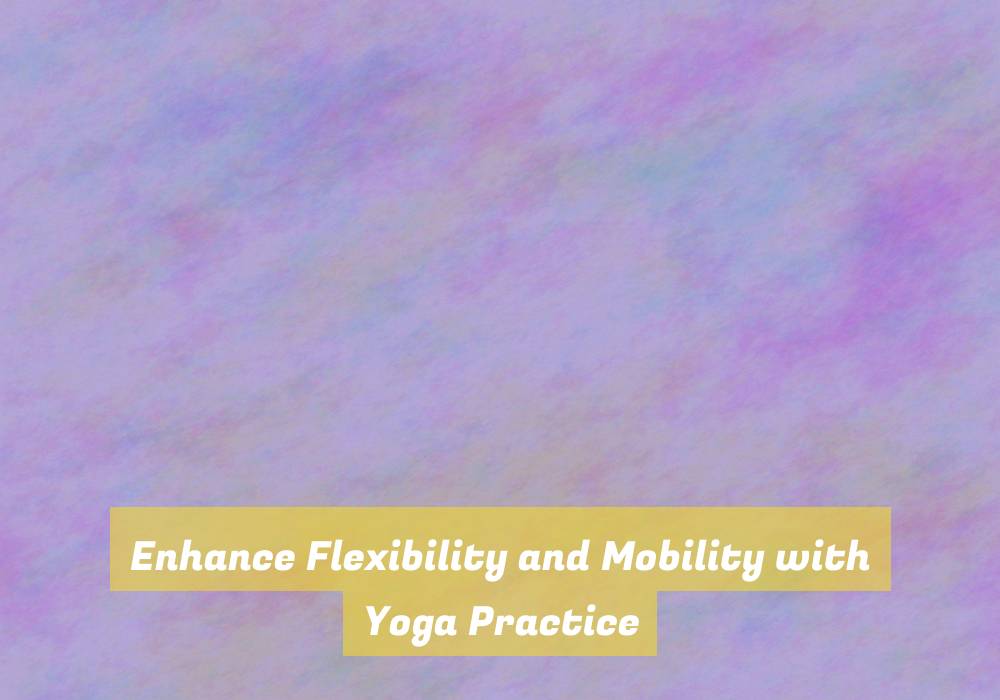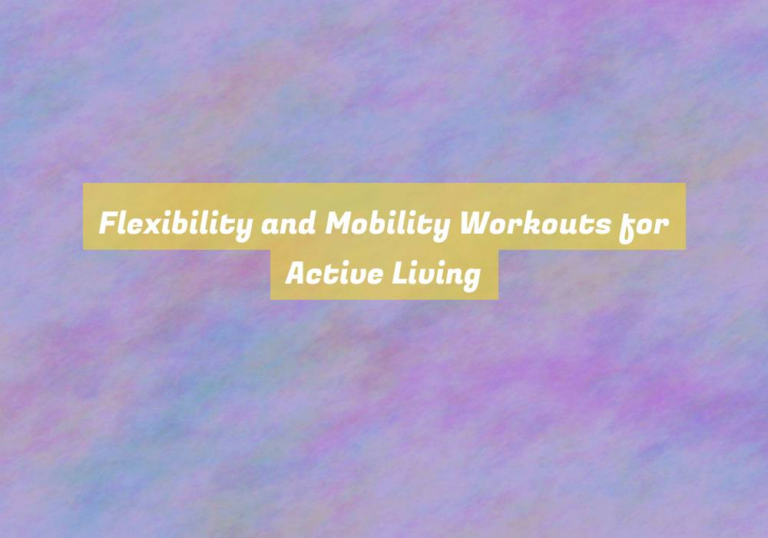Enhance Flexibility and Mobility with Yoga Practice
Have you ever watched a tree swaying in the wind, its branches bending and twisting gracefully without breaking? Just like that tree, your body has the potential to become more flexible and mobile through the practice of yoga.
ItG??s not just about touching your toes or doing a perfect split; itG??s about finding freedom of movement and ease within your body. But how can yoga help you achieve this?
LetG??s explore the science and techniques behind enhancing flexibility and mobility through yoga practice.
Benefits of Yoga for Flexibility
Improve your overall flexibility and range of motion by incorporating yoga into your fitness routine.
Yoga is a powerful tool for enhancing flexibility as it focuses on stretching and lengthening muscles. The various poses and movements in yoga help to improve the elasticity of your muscles and connective tissues, leading to increased flexibility over time.
By regularly practicing yoga, you can gradually increase your range of motion, allowing you to move more freely and with greater ease in your daily activities.
Additionally, yoga not only targets major muscle groups but also works on the smaller, stabilizing muscles that are often neglected in other forms of exercise. This holistic approach to strength and flexibility helps to create a more balanced and mobile body.
As you progress in your yoga practice, youG??ll notice improvements in your ability to bend, twist, and reach, making activities such as reaching for items on high shelves or bending down to tie your shoes much easier.
Incorporating yoga into your routine can lead to noticeable improvements in your overall flexibility and mobility, making everyday movements feel more effortless and enjoyable.
Key Yoga Poses for Mobility
Enhancing your flexibility through yoga practice can be achieved by incorporating key yoga poses specifically designed to improve mobility and range of motion.
One such pose is the Downward-Facing Dog. This pose targets the hamstrings, calves, and shoulders, helping to lengthen and release tension in these areas, thus improving overall mobility.
Another essential pose is the Warrior II pose, which works to open the hips and stretch the inner thighs, groins, and shoulders. This helps to enhance flexibility and mobility in the lower body.
Additionally, the Cat-Cow pose is beneficial for spinal mobility, as it involves arching and rounding the back, promoting flexibility and relieving tension in the spine.
The Pigeon pose is also key for increasing hip mobility and can help release tension in the hips and lower back.
Incorporating these key yoga poses into your practice can significantly contribute to enhancing your overall mobility and flexibility, allowing you to move more freely and comfortably in your daily activities.
Breathing Techniques for Flexibility
To increase flexibility and mobility, incorporating specific breathing techniques into your yoga practice can be highly beneficial. Deep breathing, or diaphragmatic breathing, is a fundamental technique that can help enhance flexibility. When you take deep breaths, filling your lungs and expanding your diaphragm, you increase the oxygen flow to your muscles, which can aid in releasing tension and tightness, ultimately improving your flexibility.
Another effective breathing technique is the ujjayi breath, also known as the ocean breath. This involves constricting the back of your throat as you breathe in and out, creating a gentle oceanic sound. Ujjayi breath not only helps to calm the mind and maintain focus during challenging poses but also encourages a deeper stretch and increased flexibility.
Incorporating these breathing techniques into your yoga practice can help you access deeper stretches, release muscle tension, and improve overall flexibility. By combining mindful breathing with your yoga poses, you can optimize your practice for enhanced flexibility and mobility.
Incorporating Yoga Into Daily Routine
Incorporate yoga into your daily routine to further reap the benefits of enhanced flexibility and mobility that can be achieved through specific breathing techniques.
Start by setting aside a specific time each day for your yoga practice. Whether itG??s in the morning to energize your body and mind for the day ahead, during a lunch break to recenter and refocus, or in the evening to unwind and relax, find a time that works best for you. Consistency is key, so aim to practice yoga at the same time each day to make it a regular part of your routine.
Integrating yoga into your daily schedule doesnG??t have to be time-consuming. Even just 15-20 minutes of yoga practice each day can make a significant impact. You can start with simple stretches and breathing exercises, gradually increasing the duration and intensity as you become more comfortable.
Consider incorporating yoga into everyday activities, such as doing a few poses while waiting for your morning coffee to brew or taking a moment to stretch during work breaks.
Conclusion
So, if you want to improve your flexibility and mobility, incorporating yoga into your daily routine is the way to go.
With its numerous benefits, key poses, and breathing techniques, yoga can help you achieve your goals and feel better in your body.
So go ahead, roll out your mat and start practicing yoga today!





